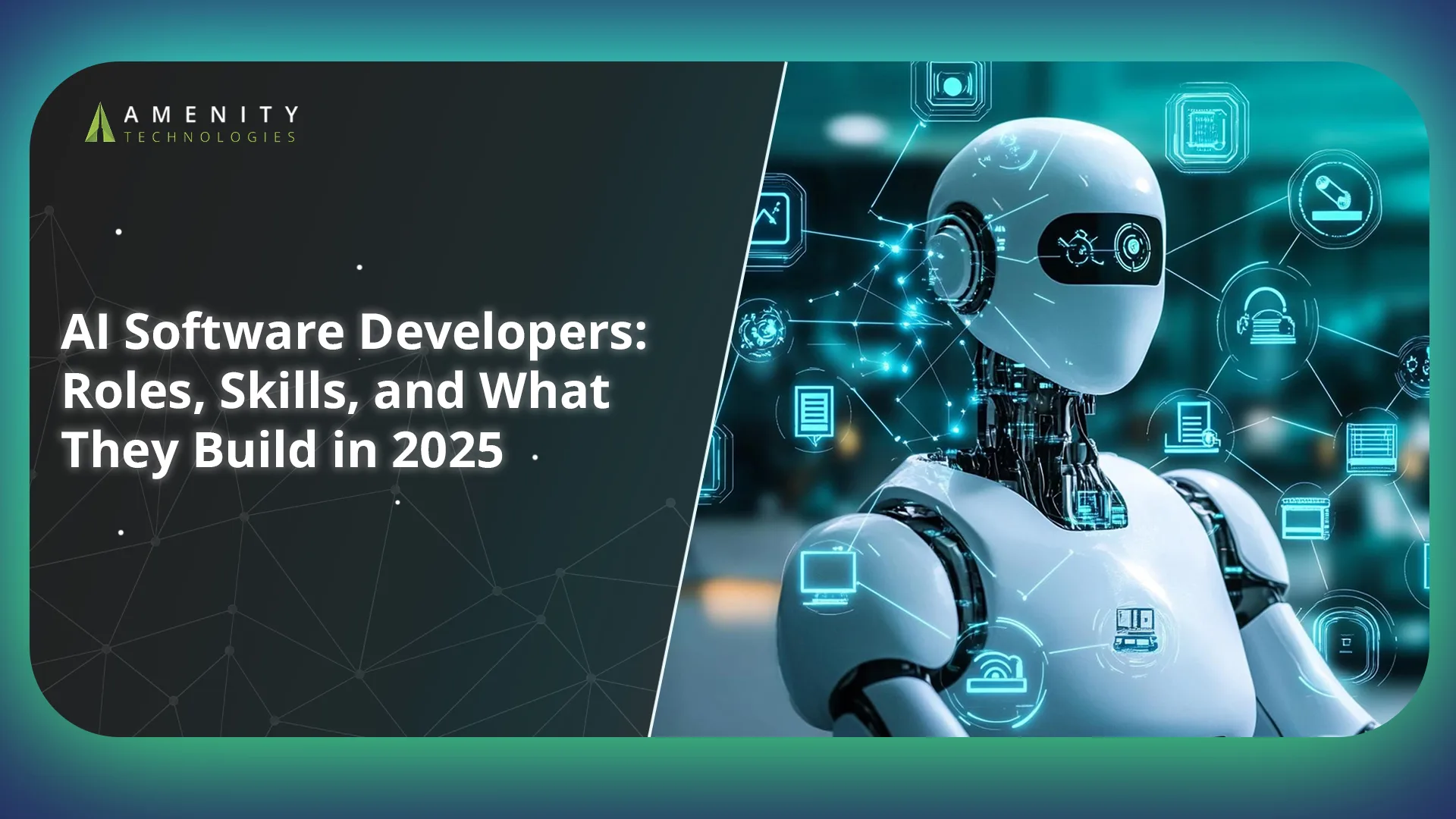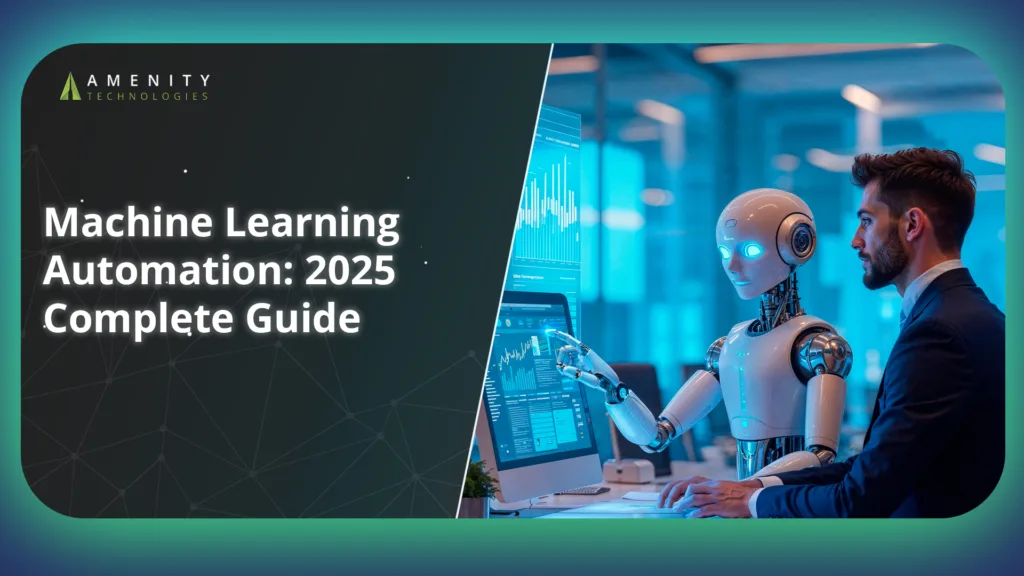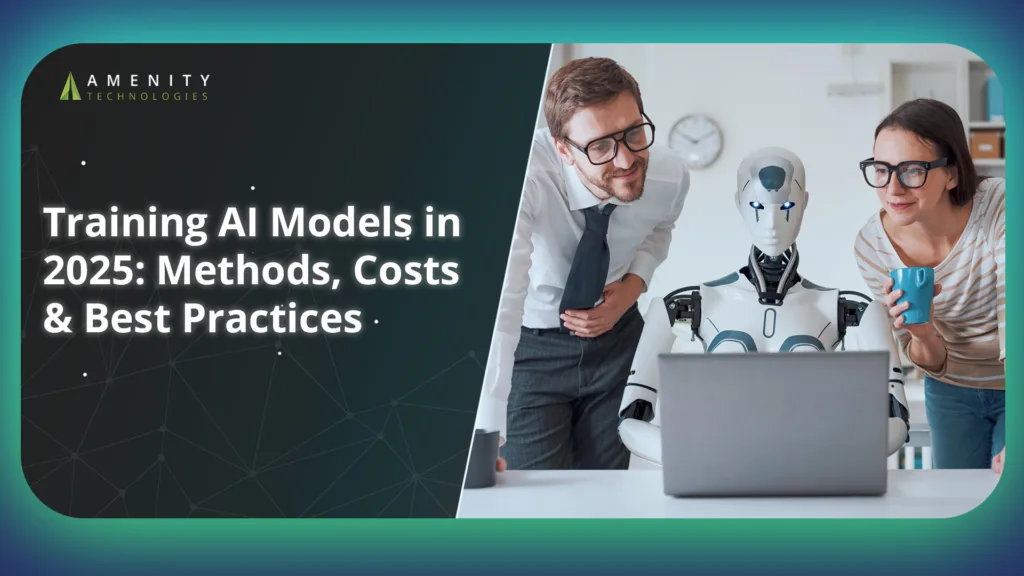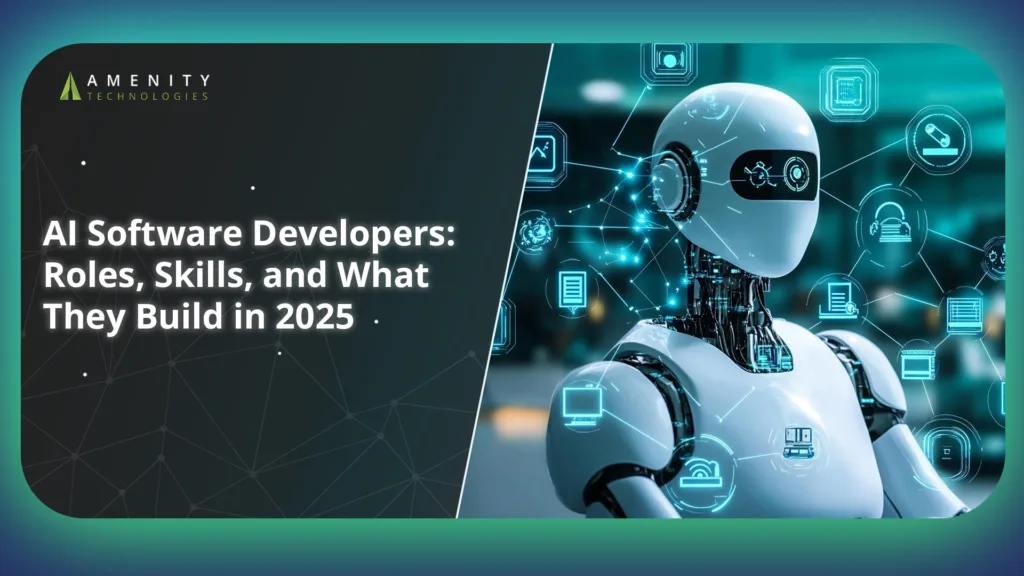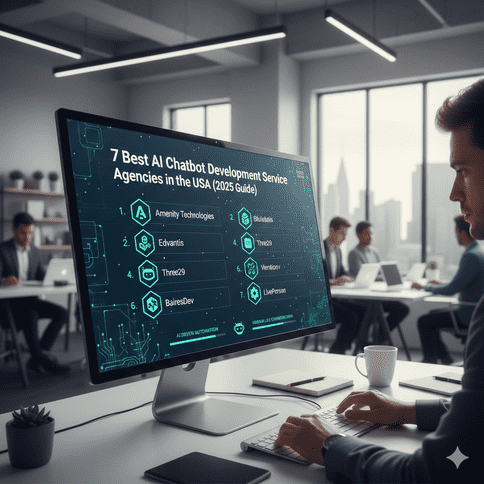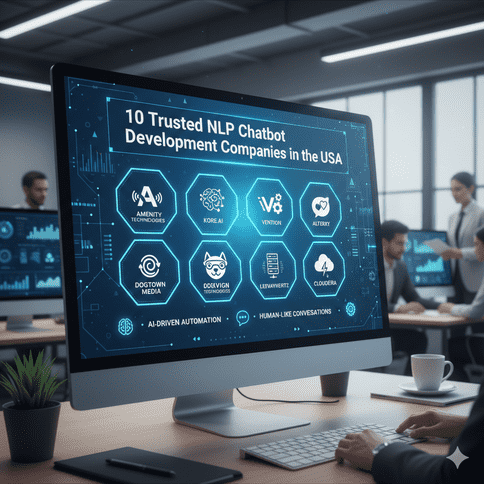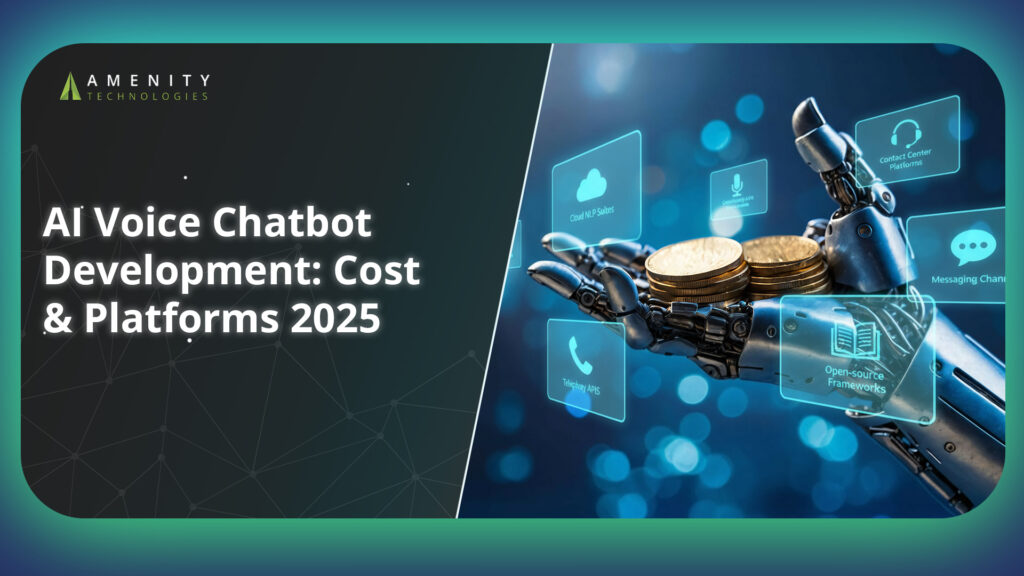Every company wants to integrate intelligent automation, yet finding skilled AI software developers remains one of the hardest challenges in 2025. Many organizations rush to launch AI initiatives but hit a wall when they can’t find or retain developers who understand both machine learning and production engineering.
AI-related job postings in the U.S. rose by 25.2% in Q1 2025 compared to the previous year, according to Veritone’s Labor Market Report. Stanford’s 2025 AI Index shows that 78% of companies now use AI in daily operations in 2024, up from 55% in 2023. This surge has outpaced the supply of qualified AI software engineers in the USA, creating a hiring bottleneck across sectors.
Businesses now face a decision: either spend months training internal teams or hire AI programmers through specialized partners. The smart move is often outsourcing to experienced AI developers for hire who can integrate models, build pipelines, and deliver production-ready systems without long onboarding cycles.
This guide breaks down the evolving roles, must-have skills, project types, and cost models of AI software developers in 2025.
Role Definitions & Job Spectrum for AI Software Developers in 2025
The demand for AI software developers in 2025 has reshaped how technical teams operate. Instead of traditional segregation between data science and engineering, companies now expect developers to manage the entire AI dev process, from building model APIs to ensuring live systems remain stable. Each role has distinct responsibilities that together create a complete development cycle.
Below are the key job types shaping the AI development space today.
1. AI Application Developer
An AI Application Developer focuses on embedding models into usable products. They integrate APIs, automate decision systems, and turn prototypes into client-facing features. For instance, they might develop recommendation tools, chat-based support bots, or predictive analytics dashboards. Their work ensures that AI insights are not confined to labs but actually deployed in production.
2. AI Infrastructure Engineer
An AI Infrastructure Engineer ensures that models run efficiently and scale across environments. These engineers design data pipelines, manage storage, oversee an AI team structure, and handle model serving through tools like Kubernetes or TensorFlow Serving. They maintain uptime, optimize GPU workloads, and monitor inference latency.
3. Prompt Engineer
Prompt Engineers design context-driven prompts that guide models to deliver consistent, accurate responses. They optimize token usage, manage context windows, and structure retrieval queries to improve model accuracy.
4. AI Agent Developer
AI Agent Developers extend the prompt engineering concept by chaining multiple prompts and logic layers. They create systems that can plan, reason, and act within defined parameters. These professionals design the orchestration that lets models handle sequential tasks, API calls, and dynamic workflows on their own. Their role has grown rapidly as businesses move toward semi-autonomous agents to manage repetitive operations.
5. MLOps/Model Reliability Engineer
No AI deployment functions efficiently without strong MLOps support. MLOps Engineers or Model Reliability Engineers handle versioning, automation, and ongoing optimization. They maintain CI/CD pipelines, track performance drift, and prevent costly downtime through monitoring and rollback protocols.
These engineers also optimize inference cost through resource allocation, ensuring each model runs within budget. By maintaining stability and repeatability, they protect production AI systems from unpredictable failures.
Top Skills and Competencies AI Developers Must Possess in 2025
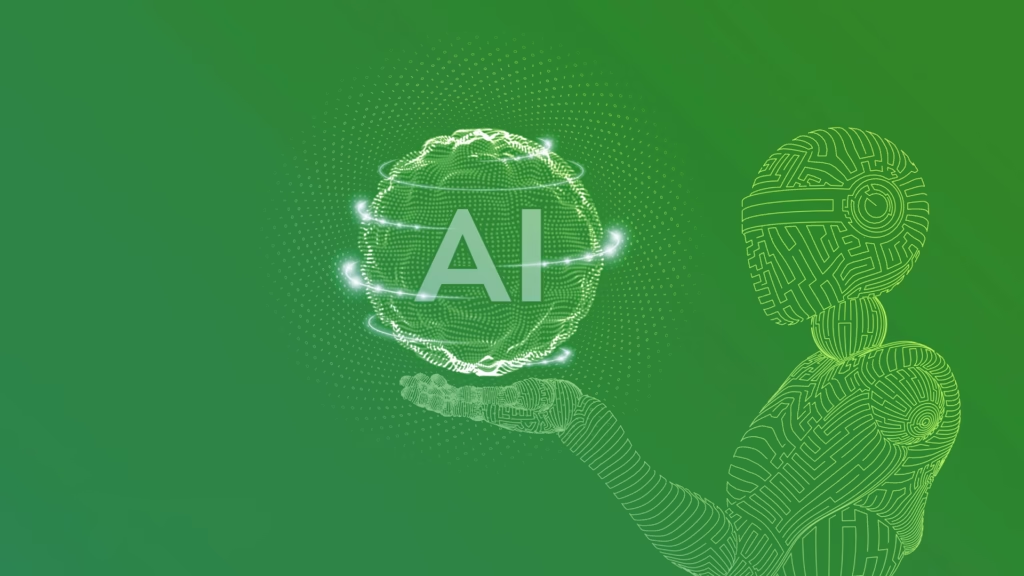
The success of any AI initiative depends on the expertise of its AI software developers. In 2025, organizations no longer hire based solely on coding ability. They prioritize developers who understand data, infrastructure, deployment, and business context. Before hiring AI developers for hire or deciding to hire AI programmers, it’s important to know the key competencies that define top-tier AI software engineers in the USA today.
1. Mathematical & Algorithmic Foundations
Every effective AI coder must have a solid grounding in probability, linear algebra, and optimization. These concepts form the backbone of neural network design and model evaluation. A clear understanding of training objectives, gradient descent methods, and regularization improves the efficiency and accuracy of deployed systems. Developers with this knowledge troubleshoot more effectively and adapt faster to new model architectures.
2. Framework & Tool Proficiency
Hands-on proficiency with frameworks such as PyTorch, TensorFlow, and JAX is mandatory for modern AI coding experts. Developers also need to work confidently with libraries like Hugging Face, LangChain, and vector databases for retrieval-augmented tasks. Familiarity with Docker and Kubernetes is now a baseline expectation, as most production environments depend on containerization.
Those managing AI team structure often favor engineers who can switch seamlessly between development and deployment tools, reducing bottlenecks and dependency on multiple specialists.
3. Prompt and Context Design
Prompt design has become a high-value skill since generative models depend heavily on structured input. Developers now engineer prompts for reasoning chains, context management, and RAG (retrieval-augmented generation) workflows. Effective prompt design ensures the model interprets intent correctly and maintains output consistency.
In projects managed by Amenity Technologies, experienced custom AI engineers apply rigorous prompt testing and iterative refinement before deployment to avoid inaccurate or biased results.
4. Deployment and Monitoring Expertise
Once a model is trained, deployment determines its real-world success. Developers must know how to serve models through tools like TorchServe, FastAPI, or Triton, and monitor latency, throughput, and error rates.
Advanced AI software developers also establish retraining triggers, version control for models, and performance dashboards that flag anomalies. These steps ensure reliability across production environments while keeping compute costs in check.
5. Domain Knowledge and Soft Skills
Technical mastery is incomplete without domain awareness. Developers who understand healthcare, finance, or retail applications can translate model outputs into meaningful business actions. Communication, adaptability, and collaboration matter equally, especially within remote ai outsourcing firms.
Ethical awareness and data governance have become non-negotiable. Responsible AI practices now influence how companies evaluate both code quality and hiring decisions.
What AI Software Developers Build in 2025?
The projects handled by ai software developers in 2025 extend far beyond predictive models or simple automation. Businesses expect working systems that can reason, retrieve context, and adapt in real time. The most successful ai developers for hire and ai software engineers USA focus on building applications that combine model accuracy with measurable business outcomes.
Here’s what leading teams are developing today.
1. Generative Agents & Autonomous Assistants
Modern AI codes no longer build single-purpose chatbots. They design autonomous assistants that manage ongoing operations like customer service, scheduling, and workflow execution. These systems combine reasoning, memory, and feedback loops to deliver consistent performance without human intervention.
Companies hire AI programmers to create generative agents capable of interacting across tools and APIs. These agents help reduce repetitive workloads while keeping accuracy and compliance intact. Amenity Technologies teams have implemented several internal and client-facing assistants that handle entire customer workflows through natural language commands.
2. Retrieval-Augmented & Knowledge Systems
Enterprises need reliable answers drawn from internal data rather than general web information. That’s why custom AI engineers specialize in retrieval-augmented generation (RAG) systems. These systems connect vector databases, embeddings, and document search pipelines to generate precise and context-aware outputs.
Typical use cases include enterprise help desks, legal research assistants, and healthcare data summarization tools. By integrating embeddings and retrieval APIs, AI coding experts ensure that outputs stay relevant and fact-based.
3. Vision and Multimodal Systems
With text, image, and audio data converging, multimodal models have become mainstream. AI software developers now build unified systems that understand multiple formats simultaneously. These applications analyze security footage, interpret product images, and even process sensor data to support real-time decisions. This integration allows retail, logistics, and industrial firms to move faster while maintaining accuracy across different data inputs.
4. AI-Powered Developer Tools
Another fast-growing category involves AI tools for internal developer productivity. AI software developers design and maintain automated documentation systems, intelligent code assistants, and test bots that perform continuous quality assurance.
These tools cut development time and reduce manual review errors. Businesses increasingly hire AI programmers with experience in code analysis and automation to improve delivery consistency and lower release cycles.
Team Structures, Hiring Models, and Cost Dynamics

Building effective AI systems in 2025 requires more than just skilled AI software developers. It also requires structured collaboration, the right hiring model, and realistic cost planning.
Whether an organization works with an internal team or engages AI developers for hire, understanding how teams are structured and what drives cost makes a significant difference in project delivery.
Typical Team Composition
A well-balanced AI project team usually includes an AI software developer, data engineer, ML engineer, QA specialist, and a product AI lead. Other team members often include data scientists, infrastructure engineers, and DevOps experts.
The AI team structure depends on the project’s scale. Smaller teams may merge roles to stay lean, while larger enterprises segment duties for speed and accountability. Effective communication among all members ensures that every deployment, from model testing to live monitoring, runs efficiently.
Amenity Technologies follows a modular team model. Each project cell includes the essential roles required for model development, deployment, and quality control. This setup minimizes delays and maintains consistent code standards across releases.
Hiring Through AI Developers for Hire
Demand for AI professionals continues to outpace availability. Many companies prefer hiring AI developers for hire or custom AI engineers through outsourcing partners. This approach helps reduce recruitment time and gives quick access to verified talent experienced in frameworks, toolchains, and deployment.
Using external specialists also helps maintain project velocity when internal hiring freezes or skill shortages occur. Outsourcing partners like Amenity Technologies provide flexibility by offering dedicated remote AI coding experts who can integrate with existing workflows or operate as autonomous pods.
Cost Components
Understanding AI project costs helps organizations plan effectively. Multiple factors influence the total budget, including developer seniority, location, compute resources, and infrastructure requirements.
- Developer Costs: Based on recent data from Flexiple, U.S. AI software developers typically earn between $55,000 and $280,000+ annually. Hourly rates vary between $25 and $200+, depending on experience and specialization.
- Regional Variations: According to Developer Bazaar, senior developers in North America often charge $150-$250 per hour, while Asia and Eastern Europe offer more cost-effective options.
- Compute & Licensing: GPU costs for NVIDIA H100 or A100 range from $3 to $20+ per hour. Licensing fees for premium APIs or frameworks also add to operating costs.
- Recruiting & Retention: A FullScale report notes that the average expense per successful AI hire, including onboarding and retention, can reach $85,000.
Outsourcing through specialized AI outsourcing firms often cuts both time and cost, offering transparent pricing and faster onboarding.
How Amenity Technologies Can Help with AI Software Developers?
Companies often struggle to find qualified AI software developers capable of handling full-cycle AI projects. Amenity Technologies addresses this by offering pre-vetted teams of AI developers for hire and custom AI engineers, delivering expertise across the entire AI dev process.
1. Expertise and Proven Track Record
We have successfully delivered over 50 AI projects, covering generative AI, computer vision, and NLP applications. Our teams include AI software engineers in the USA with experience in MLOps, prompt engineering, and scalable deployments. By leveraging expert AI coding experts, we ensure that models are production-ready, optimized, and aligned with business objectives.
2. Rapid Hiring and Deployment
Time-to-hire is critical for AI projects. We provide access to pre-vetted AI developers for hire across multiple time zones, enabling onboarding within days rather than months. Organizations can quickly fill gaps in internal teams or launch new initiatives with experienced AI programmers who integrate seamlessly into ongoing workflows.
3. End-to-End Development Capability
From prototype to production, Amenity covers the full AI lifecycle. Our team handles data pipelines, model deployment, API integration, and monitoring. AI software developers focus on stability, cost efficiency, and compliance while delivering business-ready solutions. This end-to-end capability reduces bottlenecks and accelerates ROI.
4. Domain-Specific AI Implementation
Amenity specializes in industry-specific AI applications, including Healthcare, Fintech, Retail, and Manufacturing. Custom AI engineers implement compliance-ready solutions with secure data workflows tailored to each sector. This ensures models are accurate, reliable, and aligned with regulatory requirements.
Conclusion
AI adoption in 2025 depends on developers who combine technical expertise, domain knowledge, and responsible AI practices. AI software developers no longer focus solely on models, they deliver production-ready systems, manage pipelines, and integrate intelligence across business processes.
Organizations that hire AI programmers benefit from speed, reliability, and measurable outcomes. Teams structured with clear roles, proper skills, and optimized deployment practices outperform competitors and reduce operational risk.
Amenity Technologies connects businesses with experienced custom AI engineers, providing end-to-end AI solutions from prototype to production. Partnering with us ensures your AI initiatives run efficiently while maintaining compliance, stability, and scalability.
FAQs
Q1: What’s the difference between an AI software developer and a data scientist?
AI software developers operationalize models into production systems, while data scientists focus on experimentation, analysis, and insights. Developers ensure models work in real-world applications.
Q2: How do AI software developers contribute to innovation?
They transform research models into deployable solutions, build pipelines, integrate automation, and optimize performance, delivering measurable business value.
Q3: Why hire from Amenity Technologies instead of freelancers?
Amenity provides pre-vetted AI developers for hire, proven delivery systems, end-to-end project management, and post-launch support, reducing risk and ensuring quality.
Q4: What industries benefit most from AI developers?
Healthcare, finance, logistics, education, and retail see significant impact from AI integration, using solutions built by experienced custom AI engineers.
Q5: How can Amenity reduce project risk?
Through experienced project leads, robust QA, monitoring, security-compliant processes, and oversight by skilled AI coding experts, ensuring stable and scalable deployments.
Q6: Can Amenity integrate with an in-house IT team?
Yes, Amenity supports both standalone pods and embedded developer models, allowing seamless collaboration with internal IT teams while maintaining project velocity.


